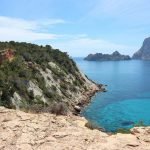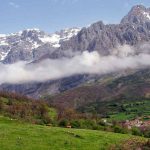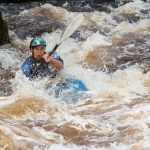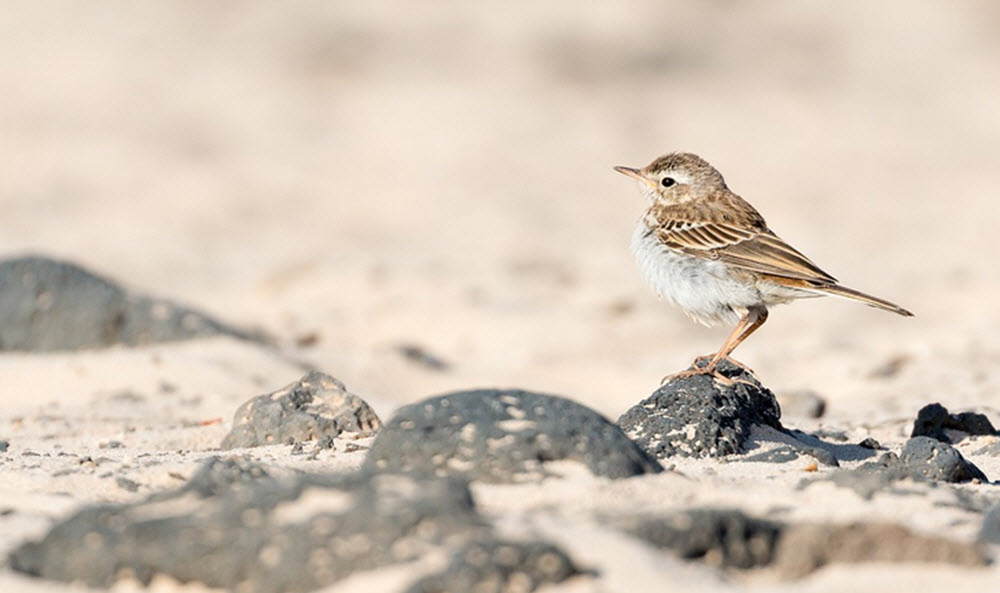Surprising Sealife of the Canary Islands
The sea around the Canary Islands is much cooler than many people expect due to the Cold Canary Current, which brings cool water down from Northern Europe. It is this temperate water that gives the islands their world famous climate, for without it, temperatures would be much higher and the archipelago much dryer than it is. Given our position in the Atlantic, close to both the tropics and the Mediterranean, the sealife in our waters is a unique mix of the tropical, the temperate and the pelagic. Species more likely to be found over coral reefs mix with cold water species from Europe and those more typical of the open ocean.
Combined with the spectacular volcanic origins of the Canary Islands, this diversity of life makes them a unique and very special marine environment. Huge tracts of virgin yellow sand, interspersed with lawns of seagrass exist alongside breathtaking underwater cliffs and jumbles of lava rock. Whales and dolphins and turtles are frequent visitors and big game fishermen have set dozens of world records off our coasts. Close to the shore, colourful shoals of Parrotfish graze on rocks that harbour moray eels and brightly coloured Wrasse and Damsel Fish. Seahorses live in the seagrass and huge rays patrol the bottom. Octopus and cuttlefish are abundant, along with an almost infinite variety of smaller organisms, such as brightly coloured sea urchins and crabs.
Ports and Harbours
There is a surprising amount of wildlife to be found in even the busiest Canarian harbours and they are a good place to search it out. A good tip is to throw some wet bread into the water. Noisy Argentinian Gulls will pick up floating crusts and a selection of fish will come and feed on the bits that sink. Look out for mullet with their white lips and the plumper salemas, with fine yellow stripes. Close to the harbour walls, bright blue ‘fulas’ and the multicoloured ‘pejeverdes’ will be in evidence, along with white faced black gobies and the occasional puffer or triggerfish. If you are lucky, you may spot an octopus tentacle protruding from a cave, or even the ugly head of a moray eel!
Large groups of barracuda, up to a metre and a half long, can often be seen in harbours. They tend to swim in shoals of between ten and two hundred and can be recognised due to their elongated shape and pointed mouths. They are voracious predators, much sought after by big game fishermen, but never attack humans in Canarian waters.
At night, giant manta rays sometimes come into harbours to feed around lights. A torch shone down the walls will reveal bright red alfonsitos and the larger red and white catalufas, which have large eyes that glow in torchlight. Black and silver sargos are much more active at night and large, mixed groups can be located with a torch.
A visit to a fishing port in the evening is a good way of seeing some of the deeper water and sport fish landed in the islands. Traditional fishing boats bring in varied catches, caught either with fish traps called ‘nasas’, nets or longlines. Look out for the multicoloured ‘viejas’ and the grotesque but very tasty scorpionfish. Larger fishing boats and big game boats catch a variety of tunny fish, sharks, swordfish and marlins, bluefish and large bream and grouper.
The Open Ocean
A trip on an inter-island ferry or a water-taxi can often be a rewarding experience for those looking for wildlife. A variety of shearwaters and petrels will be seen, flying close to the water’s surface. Some, such as the White-faced Storm Petrel are very rare and breed only on one or two of the Canary Islands. Graceful Common Terns are often seen around the coast, and a group of them plunging into the sea to catch small fish is a beautiful sight.
Dolphins and porpoises are common in our waters and often ride the bow waves of ferries. Among the larger cetaceans, Pilot Whales are common, especially around Tenerife, and Sperm and Killer Whales are often seen around the Eastern Islands. Several species of turtle visit and are occasionally washed up after becoming trapped in fishing nets or fouled with oil. Other creatures that are sighted from boats include blue and hammerhead sharks, Portuguese Man of War jellyfish, Flying Fish and Manta Rays.
Beachcombing
A wide selection of shells and other objects can be collected from Canary beaches, especially after storms. Among the most common are cuttlefish bones, well known due to their use as a source of calcium for canaries. They often wash up on beaches and are more often seen that the living creature. The delicate spiral Ramshorns also come from a seldom seen squid and are very common along the strand line. Also common are the very delicate lilac shells of the Janthinidae. These open ocean snails live under a raft of bubbles, only washing up on the shore after they die. Stranded jellyfish also wash up after stormy weather and should not be handled, as they are still capable of stinging.
Common shells to be found empty along the coastline of the canaries include sea urchins carapaces without the spines. These can be green, purple or brown and are as beautiful as they are fragile. Venus Ear shells are easily recognisable, with one side covered in mother of pearl. The living Venus Ear lives stuck under rocks, emerging after dark to graze on algae. Limpets, winkles and dog whelks are common all around the Canaries, while cowries, mussels, cockles and scallops also turn up. Goose Barnacles can be found attached to almost any piece of floating debris that has been in the water for any length of time.
Rocks and Rockpools
Rockpools are perhaps the best place to see a wide selection of sea life without the need to get too wet. Low tide leaves large areas of rock exposed around the coast, trapping animals that cannot normally bee seen without a mask and snorkel. In general, the less time rocks are exposed to the air, the more life is found on and among them. Especially low Spring and Neap tides expose areas that are usually underwater and these can yield very rich pickings for the naturalist.
Some caution is needed when exploring rockpools, as the tide comes in fast and exposed rocks can be very slippery. A few of the animals that are found can also cause damage. Sea urchin spines snap off under the skin and cause painful injuries, while the red and white bristleworms to be found under rocks are best avoided, as their bristles irritate the skin. Brown sea cucumbers exude a white fluid when handled, which is very hard t o remove from skin or clothing. Small Scorpionfish, often trapped in rockpools, have poisonous spines and large crabs can deliver nasty nips with their powerful claws. It is always best merely to observe any creatures found, as much for the observers benefit as theirs. Do not forget to replace any rocks that you turn over and make sure any shells you take home do not already have a rightful owner.
The most obvious creatures to be found on exposed rocks are the birds, which settle to feed and rest at low tide. As well as the ever present Yellow-legged Gull, schoolmaster-like Grey Herons and comic Little Egrets are common and easy to spot. They lurk close to the waters edge, preying on trapped fish and unwary crabs and shrimps. A closer look will often reveal a number of smaller and less obvious birds. Whimbrels are common, and recognised due to their long curved bill and distinctive call when disturbed. Turnstones stick to pebbly areas, earning their name by moving small stones in search of worms and crustaceans hiding underneath. In Spring and Autumn, large, mixed flocks of migrating shorebirds are often seen, resting and feeding before continuing on their way. Among the more exotic birds seen occasionally along our coasts are the graceful Avocet and the bulbous-billed Spoonbill.
Rockpool Inhabitants
Even the smallest and shallowest rockpool is likely to have fish living in it. Gobies and blennies are small specialists in this particular habitat and, with patience, can be tempted to take bread or squid from the hand. Baby mullet and sucker fish are also often found in the smallest pool. In deeper pools closer to the low tide mark, the number of fish species to be found increases. Fulas and pejeverdes are common, while small sargos, mullet, grouper, wrasse, pufferfish and scorpionfish are also evident. In deep pools with caves, moray eels lurk, along with grouper and a wide variety of other fish.
Other organisms to be found in rockpools include small, transparent shrimps, which will often come and nibble on a foot left in the water, a variety of crabs, including the hairy ‘jaca’, which is very tasty and much sought after. Brown sea hares, with black circular marks, and sea cucumbers are often found in cracks and caves, along with a wide variety of sea urchins and anemones. A careful search among the seaweed will often reveal small but brightly coloured sea slugs and starfish. Bright red Sally Lightfoot crabs are easily spotted on exposed rocks, but are very shy. They are caught in the Canaries with bait wrapped in a ball of rough thread, which tangles up their claws. At night, tubeworms extend their delicate fans and pluck small morsels from the water and crabs come out to feed, safe from the sleeping seabirds.
Perhaps the best way to find rockpool inhabitants is to turn over rocks and stones. This should be done very sparingly and the rocks carefully replaced as many of the creatures found under them are killed by sunlight. Many rocks also have sea urchins underneath them. Look out for brightly coloured orange and yellow sponges, shy pea crabs and the highly mobile bristlestars, which will wriggle off as soon as they detect light.
Under the Water
While a wide selection of marine life can be seen from above the surface, taking the plunge and joining it underwater opens up an entirely new world. Snorkel kits are widely available in most shopping centres and are very reasonably priced, although for the sake of comfort, it is often best to spend a little more than the minimum. There are dive centres in most resorts and they cater for a wide range of abilities, from absolute novices to experienced divers. In some areas, there are commercial glass-bottomed boats and even submarines, which allow you to experience the underwater world without getting wet and with the added bonus of an experienced guide.
Snorkelling and Diving
The sea around the Canary Islands is remarkably clear and an ideal site to try snorkelling. A mask and breathing tube allows the swimmer to become part of the underwater landscape in comfort, and to explore features such as caves that are otherwise inaccessible. From sandy, crowded beaches to rocky shores, the snorkeler is guaranteed to find a dazzling array of life. In this section, we will take a look at the different ecosystems of the Canarian coastlines, highlighting the creatures most likely to be encountered.
While the sea around the islands is largely safe, it is always best to stick to defined swimming areas and avoid sites where nobody else is swimming. Most beaches have a warning system in place, with a red flag denoting dangerous conditions and a yellow flag caution when swimming. Lifeguards are available on most beaches and will be able to provide up to date information about the safety of bathing. In any case, the number of small leisure craft and jet skis in use makes it advisable not to swim out too far without the use of a dive buoy. Certain stretches of coast experience powerful waves and strong currents and are dangerous for even the strongest swimmers.
Sandy Bottoms
For most visitors to the islands, sand is an everyday feature of the trip. The beaches around the islands, both natural and artificial, are usually made up of fine-grained golden sand. At first glance, it is a uniform and seemingly barren habitat that does not look like it supports a wide variety of sealife. However, the life is there and merely needs to be searched out. The trick is to look for features, either in the form of seagrass beds, underwater hummocks or isolated rocks where creatures tend to congregate. Even the buoys that mark out swimming areas are well worth investigating for the variety of life they harbour. Small pilot fish and remoras often latch on to buoys until a more mobile companion turns up.
Bare Sand
Even areas of completely bare sand support specialist animals. Small flatfish rise from the bottom if the swimmer gets too close and are well worth observing for their unique form of locomotion. They are often seen in pairs and are surprisingly curious and unafraid of divers. They have a habit of settling on the bottom and disappearing in a puff of sand, leaving only their protruding eyes above the sand.
A more sinister occupant of sandy bottoms is the solitary, sand coloured Lesser Weever, with its bright blue and poisonous dorsal spines. These fish, up to 45cm long, are responsible for most of the injuries incurred in Canarian waters, for they inflict a painful sting on bathers unwary enough to tread on them. They are best left well alone. The very similar Lizardfish is harmless and distinguished from the Weever due to a lack of dorsal spines and its enormous mouth. They are not at all shy and confident enough of their camouflage to allow close observation. Lizard fish are avowed cannibals and will eat anything that will fit into their mouths. There are cases of large ones swallowing smaller examples hooked by fishermen, spitting them out reluctantly when they leave the water.
A curious sand specialist is the pink Cleaver Wrasse, easily identified by its narrow rectangular head and fierce teeth. It has the almost miraculous ability to disappear in a flash if disturbed, burying itself in the loose sand faster than the eye can follow. It feeds on crustaceans and molluscs hiding in the sand.
Other fish likely to be encountered on sandy bottoms include the Herrera, an elongated silver bream with fine black stripes. While it can grow quite large, shoals of smaller examples are more likely to be encountered. They tend to hug the bottom and have characteristic fleshy, white lips. Other breams, or ‘sargos’, as they are known locally, are also often seen on sandy bottoms and can form large shoals. They can be distinguished from the less frequent spotted bass by their rounder shape and stripes.
Although not tied to sand, large groups of Palometas, Grey Mullet, Salemas, Bogas, Mackerel, Sardines and other pelagic fish often come in close to the shore for shelter and can form spectacular shoals. Look for them just beyond the surfline. Wherever large groups of small fish are to be found, the predatory Barracuda, Needlefish and Bluefish are unlikely to far away. A feeding shoal of these fierce fish can be a spectacular, if gruesome sight and the highlight of a swim.
Perhaps the most spectacular sight on sandy bottoms are the rays, of which several types are locally frequent. Chuchos are the most common and grow up to 250cm long and weigh 250Kg, while the wider Mariposa grows up to 50Kg. Both are equipped with tail stings and should not be disturbed. The Electric Ray is guitar-shaped and can deliver a dangerous shock if handled, a fact that has not escaped careless speargun fishermen.
Seagrass Beds
Seagrass may look like a kind of seaweed, but is in fact the only land plant able to grow in the sea. It forms large lawns in water down to depths of 15m and provides a home for a plethora of small animals. Cuttlefish, related to the squid and octopus, are common in seagrass lawns. They are masters of disguise, changing not only their colour but the texture of their skin. If you are lucky enough to see two together, you will notice that they communicate through colour, changing from almost jet-black to white instantly, with different shades rippling hypnotically over their skin.
Sargos are common around seagrass, as they are everywhere, as are Red Mullet, a local delicacy. These pink fish make a living digging pits in the sand and eating exposed morsels, feeling for them with a pair of barbells under their chins. A feeding shoal of these fish often attracts others, including the Pufferfish and Triggerfish, both inveterate opportunists. Among the fronds of seagrass lurk a wide variety of shrimps, small gobies and crabs, along with grotesque sea cucumbers, which do nothing but roll back and forth in the current, siphoning in water at one end and squirting it out of the other. Among the most remarkable seagrass specialist is the Seahorse, very common in some areas but hard to spot and very shy. Patches of floating seagrass uprooted during storms often harbour its relative the pipefish, just as shy and very well camouflaged. Another notable inhabitant in the Culebre, a type of eel that looks exactly like a sea snake. They often shelter in sunken car tyres and are harmless, retiring fish. Another eel lives in colonies of several hundred and spends its life half buried in the sand. If a diver approaches to closely, the eels will disappear, emerging when the coast is clear.
Rocky and Mixed Bottoms
Rocky bottoms are the snorkelling and diving sites par excellence of the Canary Islands and around Palma de Mallorca. Here the widest variety of algae, fish and invertebrates live and feed, taking advantage of the cover afforded by caves, cracks and attached seaweed. Large boulders and rock formations attract schools of smaller fish, which in turn draw in predators. Grotesque Scorpionfish lurk under overhangs while Fulas and Pejeverdes abound. Pufferfish and Triggerfish are in their element on mixed bottoms, along with White-faced Blennies and a plethora of goby and other small species. Rocks covered with algae are home to several species of small green wrasse, which can be very common. A particularly striking, bright yellow sponge is also common on large boulders. It takes many years to grow and loses its vivid colour very quickly if removed from the sea.
Large schools of Grunts or ‘Roncadores’ are a common site amongst rocks and are locally called snoring fish due to the loud noises they sometimes make. Roncadores are still very abundant around the islands because they do not enter fish traps. They are shy creatures that feel safe in large groups. Several thousand can sometimes be found in very shallow water. Sargos are common and the large and solitary ‘Sargo Breado’ is a spectacular sight, growing to over 50cm. They are often seem hanging off schools of other fish and are wary of divers and inclined to flee into deeper waters if disturbed.
Multicoloured Parrotfish or Viejas are most likely to be encountered on rocky bottoms, browsing on small animals in large, mixed-sex schools. Once heavily fished as a local delicacy, a reduction in the harvest is now allowing the Vieja to recover and it is returning to its old haunts. Large examples, up to at least 50cm, are still rare, but shoals of up to 50 of these peaceful fish are becoming a feature of some sites. Where speargunning is banned, they are quite tame and smaller specimens are curious and will come and investigate swimmers. Viejas are sexually dimorphic, with the males a grey-brown colour with a marked black spot behind the head, while the females are brightly decorated in red, yellow and blue. Both sexes have distinctive protruding teeth in the shape of a parrot’s beak and the fish is believed to change sex throughout its life. The Vieja is susceptible to sea lice and many examples have at least one of these parasites attached behind the head. The Vieja’s favourite food is crabs and they are caught in large number using salted crabs on large hooks. Fishermen on small boats locate schools using a small glass-bottomed box, fishing for them with cane rods tipped with a ray’s tail.
Caves on rocky bottoms are well worth investigating, as they shelter species that only come out to feed at night. Red ‘Alfonsitos’, looking remarkably like goldfish, and the larger ‘Catalufas’ are common. Lucky divers or snorkelers will encounter grouper caves, where several specimens of different sizes live together. The fortunate few will find a yellow ‘Abae’, a rare morph of this common grouper, usually brown with black marks. Meros and Abaes can become quite tame and soon get used to being hand fed, to the point that large examples, up to 2m long, will pester divers incessantly. The debate about feeding these magnificent fish continues as tame and well-fed examples become easy targets for unscrupulous speargun fishermen.
Caves are also the best place to see sea urchins, in a variety of colours, sea anemones, sea cucumbers, sea hares and sponges. Long-spined Black Sea Urchins are common and have assumed plague proportions in some areas, grazing so intensively that algae has no chance to grow. Areas of white rock covered in urchins are called Urchin Bights and tend to support fewer fish than areas without urchins. Part of the problem is the overfishing of predators such as Triggerfish and Triton Shells, which keep urchin numbers under control. Some divers crush these urchins whenever they can in a bid to control them but this is not advisable, as the spines are poisonous. The urchin’s long spines also provide a home for a variety of juvenile animals and small creatures, such as shrimps and spider crabs.
Octopus are perhaps the star cave inhabitant, as they are house proud animals and keep the entrance to their particular cave spotlessly clean. A small cave surrounded by weedless rock, small pebbles and crab carapaces is very likely to contain an octopus. Rarely completely hidden, they tend to sit at the entrance to their home, watching their neighbours. If disturbed, they slip seamlessly into their cave and block up the entrance using their collection of pebbles. If pressed, octopus, or ‘pulpos’ as they are known locally, shoot off using their siphons for propulsion and leaving a cloud of brown ink behind them. In some places they are extremely common and you are seldom likely to be unwatched by at least one pulpo when swimming in the canaries.
Protecting Our Coasts
The sea around the Canary Islands provides a home for a fascinating array of creatures and for this reason alone, should be vigorously protected. Several very rare seabirds breed on the islands, which also provide a vital stopping point for vast numbers of migratory seabirds and cetaceans. We have already lost the endemic Black Ostercatcher and a population of endangered Monk Seals and efforts must be increased to make sure these are the only creatures that disappear.
Overfishing is still a problem, although with the reduction in the number of fish traps, speargunners and nets in use on the continental shelf, it has moved offshore and now mostly affects deep-sea animals. Few of the fish consumed on the islands now come from their waters as factory fishing interests have moved to the coasts of Africa, where fish are, at least in the short term, still abundant. Fish farming is becoming an important industry around the archipelago and will eventually be widespread enough to cope with the demand for fresh fish. It has had unforeseen consequences, as several of the species farmed are not naturally found around the islands and have escaped. The impact of these alien species is not yet understood and could seriously affect populations of native species.
Overfishing is, however, still a threat to some species and those that feed off them. Whitebait netting has been banned for several years after these fish were almost driven to extinction and the Jurel, a kind of Jack, has almost completely disappeared from some islands due to its affinity for fish traps. Factory fishing with lines equipped with thousands of hooks continues and threatens deep-sea species with long life cycles, as well as killing fish with no commercial use. The selective removal of a fish species not only endangers its future, it also impacts all the other creatures in its ecosystem. The overfishing of keystone predators such as Triggerfish, Jacks, Meros and Bream allows they prey to breed unchecked, resulting in Urchin Bights and huge shoals of Bogas. Once these changes occur, nobody is sure whether they can be reversed.
While the Canary Islands have so far be lucky enough to avoid a major oil spill near our coasts, the illegal flushing of fuel tanks by profit-motivated sea captains still kills a huge number of seabirds every year, as well as polluting the coastline itself. The great majority of sealife deaths due to oil are due this practice, rather than more newsworthy oil spills. Anybody who has returned from the beach in the Canaries with tar on their feet has these modern day pirates to blame for the mess.
Recently, the impact of naval exercises off the Canary Islands by both the Spanish and NATO fleets has been called into question. Scientists believe that the powerful sonar used during these exercises can disorientate whales and dolphins, which rely on their own form of sonar to navigate. Certainly, large numbers of dead and distressed cetaceans have washed up on our shores during and after exercises. Because the Canary Islands boast important populations of several whale species and whale spotting has become an important industry, there is a growing movement to ban the use of military sonar in our waters until it has been proved harmless.
The most visible threat to the Canary Island coastlines remains the continued development of tourism. Large areas of coastline have been changed beyond recognition due to the building of sea walls, recreational harbours and artificial beaches, although attempts to remedy this with artificial reefs are ongoing. Rubbish generated by the 10m tourists passing through the islands every year also has a detrimental effect on sealife. Turtles mistake plastic bags for jellyfish and swallow them and along with birds, get tangled in fishing line and plastic rings from drinks cans. The deforestation of mountain areas and continued hotel development mean rainwater erodes the soil and washes it into the sea, where it clouds the water and prevents light-dependent organisms from growing, as well as reducing visibility for the diver.
The Future
The islands are confronted with a choice of whether to continue to exploit the sea in an uncontrolled manner, and risk losing our unique status as a sealife haven, or whether to plump for sustainable industries. The increase in the popularity of scuba diving, snorkelling, surfing, big game fishing and whale watching in the Canary Islands is a positive sign, but irresponsible practices continue. Traditional fishing methods backed up by sensible restrictions on the number and size of fish captured would appear to be the way forward as well as a responsible increase in other activities. Marine reserves with little or no disturbance are needed and would benefit fishermen in the long term by proving a safe breeding haven for commercially fished species. An increase in the number of artificial reefs would create new breeding sites for marine life and provide the added bonus of new areas for scuba divers to explore.
Note: This article is an extract from a forthcoming publication by Editorial Rueda







